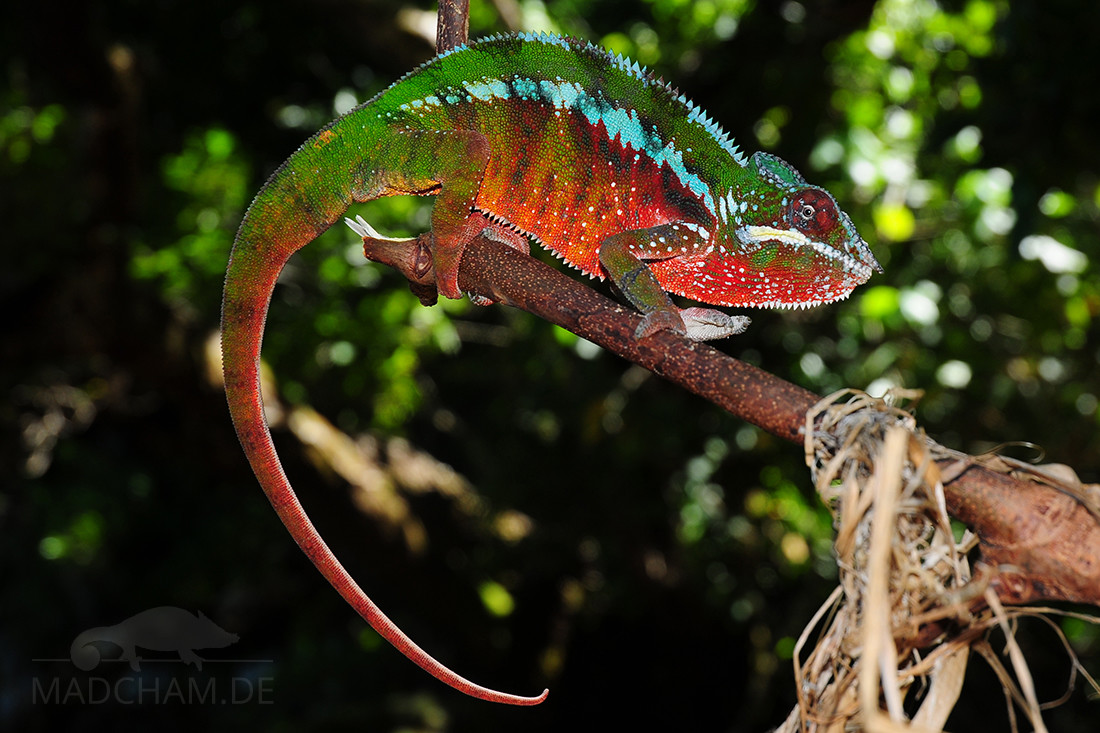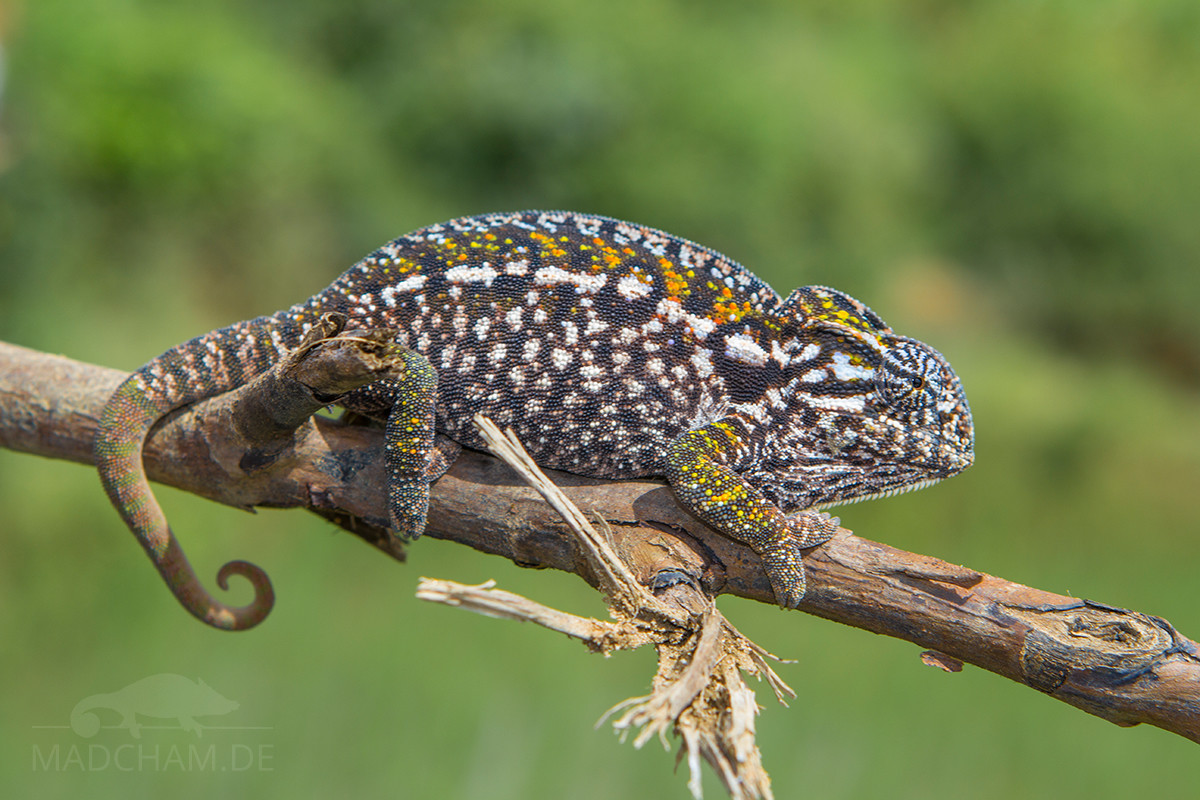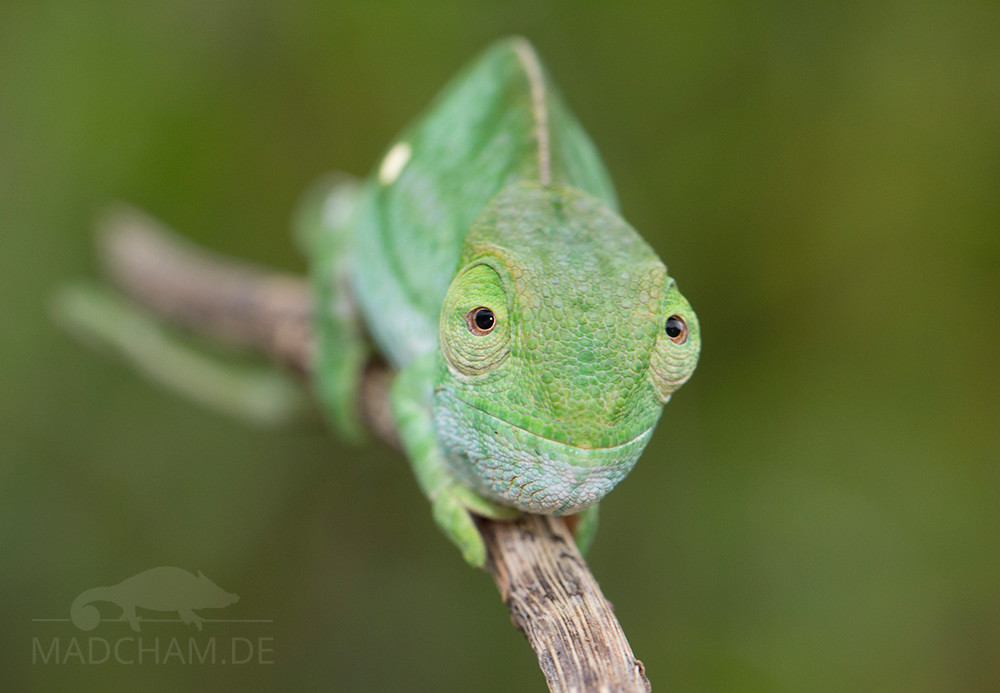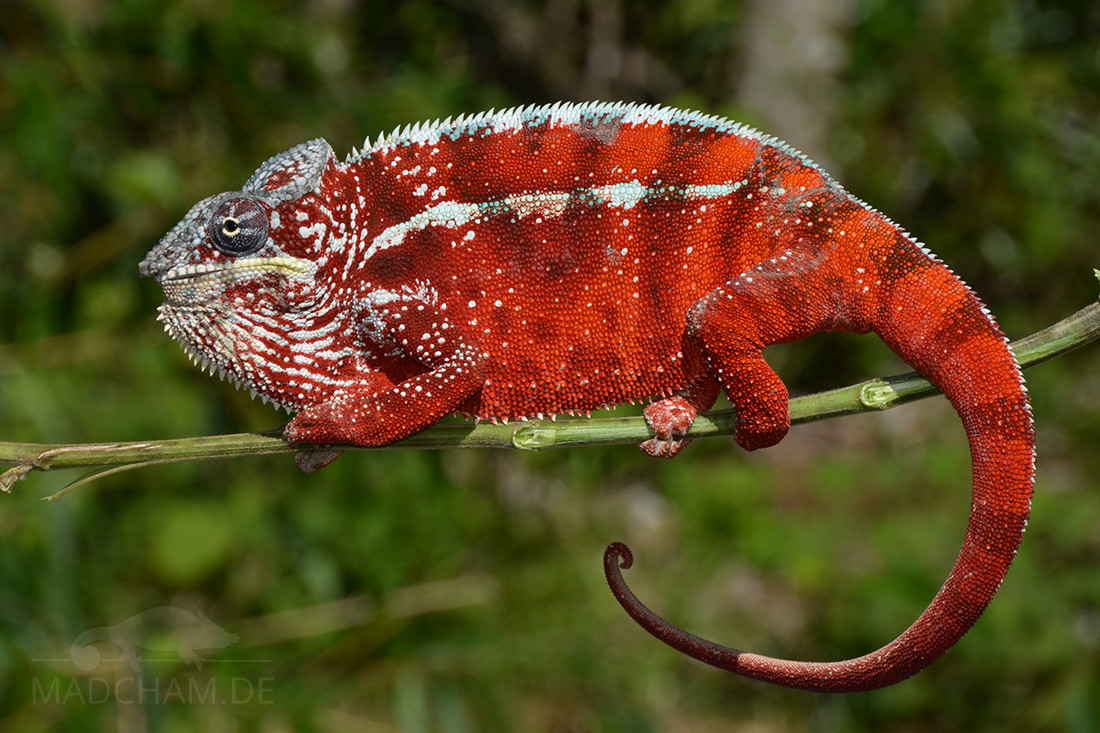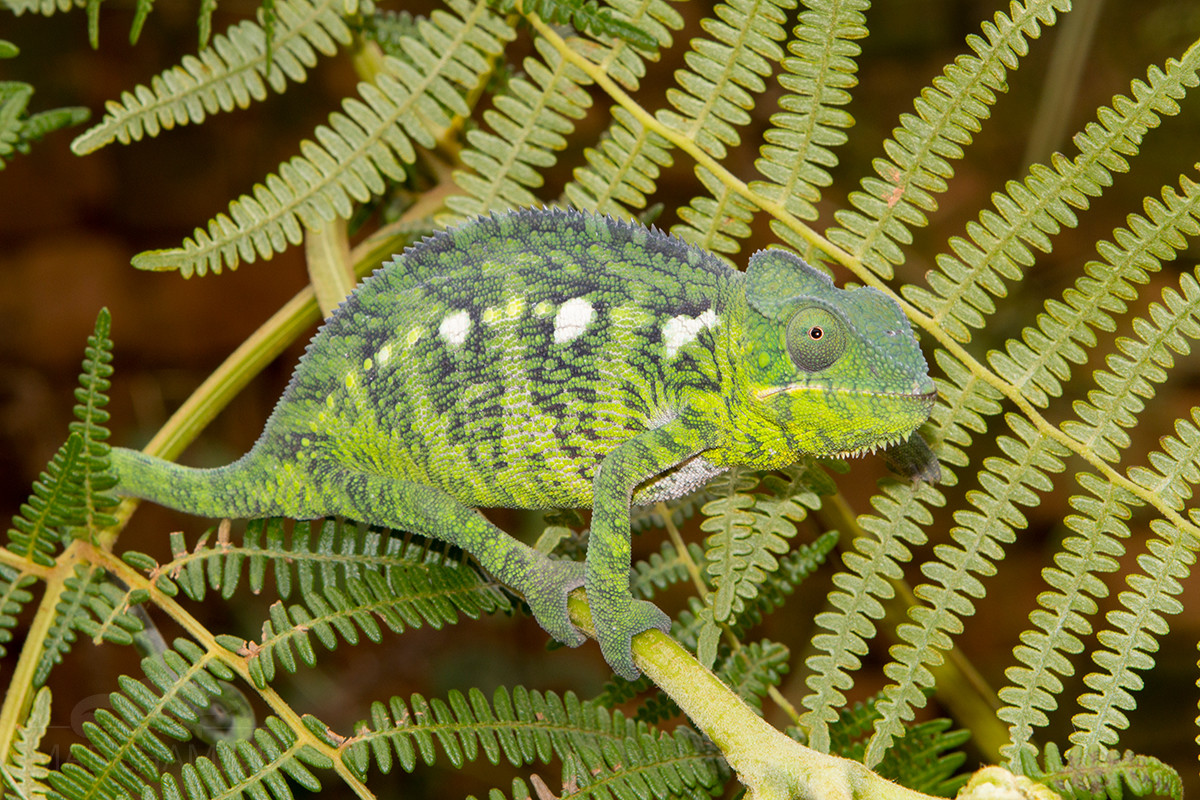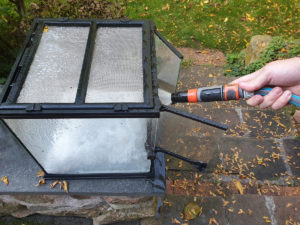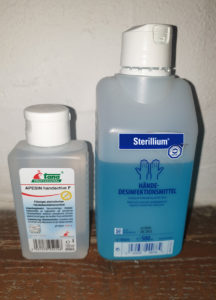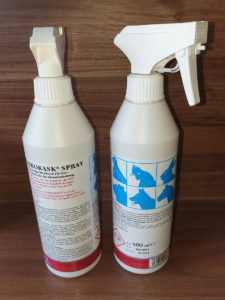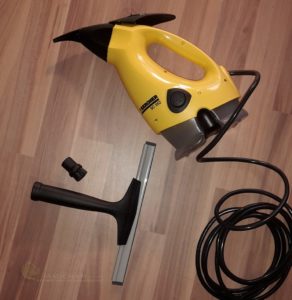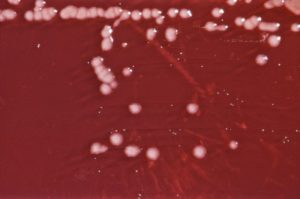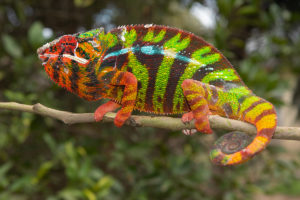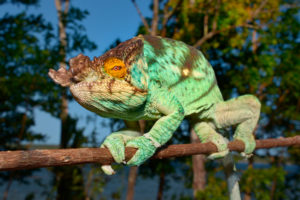Everyone in the terrarium hobby has already experienced it: You painstakingly set up a beautiful terrarium, but do not take it so exactly with the quarantine and put the newly acquired chameleon in the great terrarium. After the first fecal samples were examined at the reptile veterinarian, it’s time for the disillusionment: The new roommate has brought subtenants, which must be treated – and thus is in addition to the quarantine of the chameleon usually also cleaning and disinfection of the terrarium. But how do you do this “correctly” so that the chameleon does not get infected again later with parasite stages that are still present?
First of all, it depends on what exactly you want to remove with cleaning and disinfection. Bacteria and fungi are easy to remove, viruses as well, depending on the type. With parasites, on the other hand, there are major differences: some are easily rendered harmless with heat, others such as coccidia are extremely resistant and are often not completely removed. The table at the end of this article gives an overview of the necessary cleaning and disinfection measures. Basically: Any disinfection should always be discussed with the treating reptile veterinarian to separate necessary from unnecessary measures and to find out the right procedure for the respective chameleon and its terrarium in the individual case.
Inhaltsverzeichnis
Cleaning
Cleaning always precedes disinfection. It ensures that the disinfection can work at all and prepares the terrarium for it. Important: Cleaning alone does not remove any parasite stages.
The first step is to completely clean out the terrarium. This involves removing plants, branches, back walls, and substrate. Plants can basically not be disinfected sufficiently. Plants of the infected terrarium should therefore not be used for other terrariums. Also, back walls should be taken out because they are not good to disinfect. Then wash out the entire tank with hot water (at least 40°C) and commercial detergent. It is crucial to be very thorough in this process and to remove even the last crumb of soil or adhesive residue, otherwise, disinfection errors will occur later. If the surfaces are very dirty, it may be useful to soak the terrarium. The basic rule is to clean until the draining water is free of dirt particles.
After cleaning, the terrarium must dry completely. It is important not to leave a single puddle of water (this also causes disinfection errors). The terrarium should be evenly dry everywhere and not have any wet spots left anywhere.
Disinfection
Disinfection is the process by which the existing viruses, fungi, or parasite stages are to be rendered harmless. Parasite stages rendered harmless cannot re-infect the chameleon later. Disinfection can be done chemically or physically. The decisive factor for effective disinfection is to select the appropriate method – depending on what you actually want to remove.
Chemical disinfection
For chemical disinfection, you use the “classic” disinfectants, usually liquids. There are different active substances on which disinfectants can be based. Therefore, not every disinfectant is equally suitable for the disinfection of, for example, coccidia or roundworm eggs. It all depends on which active ingredient the disinfectant is based on. As a rule, the active ingredient is indicated on the package.
Protective clothing, goggles, and mask are useful when using some chemical disinfectants. Some disinfectants were originally designed for stable and surface disinfection, but not for the terrarium area. Therefore, use for disinfecting terrariums should always be discussed with the attending veterinarian beforehand. All surfaces that have been treated with chemical disinfectants must be rinsed very thoroughly with water after disinfection. If necessary, the treated terrarium should also be aired out for a few days.
Alcohol
Alcohol in the form of ethanol (ethyl alcohol) is the most common liquid used for disinfection. Alcohol-based disinfectants are classically used for hand disinfection and in medicine. Only disinfectants with an alcohol content of 20% or more are bactericidal to a limited extent, i.e. they kill bacteria. Between 50 and 80% alcohol content, disinfectants reliably kill bacteria within one minute. Viruses or spores are only eliminated in combination with other chemicals, such as alkalis or peroxycarboxylic acids. However, most parasite stages cannot be destroyed with alcohol-based disinfectants, see this table. Common disinfectants with alcohol as an active ingredient are Sterilium (Hartmann), Softa-Man (Braun), or Sagrotan (Delmed).
Formaldehyde
Formaldehyde is a representative of aldehydes. The aqueous solution that can be used for disinfection usually contains 10% formaldehyde. If used improperly, formaldehyde can cause irritation to the skin, respiratory tract, and eyes. In case of repeated contact, formaldehyde is considered carcinogenic. Accordingly, formaldehyde should only be used when there are no other options for disinfection. Products containing formaldehyde are Formalin (Schering) and Formol (Hoechst).
Chlorine compounds
Chlorine compounds can also be used for disinfection. The most common is 4-chloro-3-methylpehnol or p-chloro-m-cresol, which is often simply called chlorocresol. It is mildly allergenic and has an irritating effect on mucous membranes. Chlorocresol is very effective against many particularly resistant parasite stages. Common products are Interkokask or Interkokask spray (InterHygiene) and Neopredisan (Menno). Kovi-X (Lucky Reptile) is available in pet shops.
Physical disinfection
Physical disinfection does not use disinfectants but uses the harmful effects of certain environmental factors to kill the bacteria, viruses, spores, or parasite stages. The various possibilities of physical disinfection also have limits.
Heat
Heat in the form of hot water or steam is the most reliable method for disinfecting terrariums, especially with regard to parasite stages. This table shows the appropriate temperature for different pathogens. The most practical method is to use a steam cleaner. This can be bought inexpensively in the hardware store and used for the entire terrarium. You can also use boiling water directly. Be careful with the application – the fast-sinking temperature of the steam and the water often tend to be prone to disinfection errors.
For small terrariums, branches could be heated to over 100°C in the oven for over an hour to safely kill all parasite stages. However, we generally recommend to rather dispose of plants and branches as well as procuring new furnishings. By the way, if you have a large sauna, you have an advantage: a few hours above 90° heat and the terrarium is free of most common parasite stages (see table).
Beware of temperature errors when disinfecting with heat. These often happen when using low-temperature steam ducks or when trying to douse objects with boiling water. Also, whenever heat is used for disinfection, caution should be exercised regarding accidents. Glass surfaces can crack or shatter when exposed to excessive heat, silicone seams can melt, and wood or plastic can burn.
Freeze
Freezing is theoretically possible to kill various parasite stages. In practice, however, this usually involves temperatures that the average freezer is nowhere near reaching. Normal household freezers cool down to -18°C on average. However, the temperatures that could be used to reliably kill permanent stages of parasites are almost always well below -70°C. Thus, freezing is not really useful for household disinfection in terraristics.
Drying out
Purely theoretically, it is possible to kill certain parasite stages by means of desiccation. In practice, however, this method of disinfection is very unreliable. Therefore, desiccation is not recommended as disinfection.
Irradiate
This variant of physical disinfection is also rather a theoretical one. UV-B radiation in a wavelength of 200 to 280 nm can actually destroy certain bacteria. However, UV-B radiation does not penetrate very deeply into materials. Deposits reduce the radiation effect for this purpose. Irradiation is therefore suitable in terraristics at most for disinfecting surfaces or clear liquids. And it is only effective – and only to a limited extent – against bacteria, but not against viruses, fungal spores, or parasites.
Disinfection error
Disinfection errors are simply problems during preparation, cleaning, or the disinfection process itself, which result in the disinfection not working as desired. In other words, you have disinfected, but you have done something wrong in the process. And then, for example, the parasite stages that you actually want to kill remain infectious, unfortunately. So the chameleon can still get infected by them. Since disinfection mistakes are made very often, we devote a somewhat more detailed discussion to them.
Incorrect active ingredient
First of all, you have to know what you want to get rid of in the first place. Only then can you select a suitable method for disinfection according to this table or together with the attending veterinarian. If you try to get rid of coccidia with alcohol-based disinfectants like Sagrotan, you will fail. Likewise, if you only want to kill fungal spores or viruses, you do not need to use chlorine cresol. In addition, a disinfectant with a working active ingredient in sufficient concentration must be selected. Most disinfectants available in pet stores are not suitable for killing parasite stages, for example.
Wrong concentration
It is enormously important to dose chemical disinfectants correctly. The concentration of the active ingredient must be correct in order to develop the desired effect. If chemical disinfectants are incorrectly dosed, they will not work (underdosed) or, at worst, will be hazardous to health (overdosed). Therefore, the dosage indicated on the packaging should be followed exactly. Either use pre-prepared, ready-to-use agents or follow the instructions on the container exactly to the milliliter.
Incorrect exposure time
The exposure times indicated on the containers of chemical disinfectants must be observed so that the effect of the disinfectant can develop at all. If a disinfectant requires four hours of exposure time, it must not be rinsed off after just one hour.
When using physical disinfectants such as heat, care must be taken to ensure that the necessary temperature to kill the parasite stages actually reaches the terrarium surfaces. Boiling water, for example, cools very quickly and one usually does not reach the necessary time period over which the temperature must be maintained to safely kill the parasite stages. Steam cleaners are a popular means of physical disinfection, but the same is true with them: you must slowly and patiently work every surface of the terrarium with the steam cleaner from a very small distance and inch by inch to achieve sufficient effect. This may well take an hour or two for an average chameleon terrarium. Rapid blasting from a distance of 50 cm, as is often done, is of no use with many parasite stages, because the steam has already cooled down by the time it hits the terrarium surfaces.
Incorrect application
Only when the viruses, fungal spores, or parasite stages to be disinfected and the disinfectant used to come into sufficient contact with each other will the desired disinfecting effect be achieved. This means that the entire surface to be disinfected must be evenly wetted. A few drops here and a few there are not enough. However, not everything has to “float” either – the disinfectant just has to leave an even, thin film.
Preparation errors
It is known as “soap error” that the combination of soaps with disinfectants can lead to a reduced effect of the disinfectant. In the worst case, it then no longer works at all. That is why it is so important to rinse off all soap residues from cleaning well and let everything dry before proceeding to disinfection.
In the same way, so-called biofilms must be completely removed. Bacteria such as Pseudomonas aeruginosa can form slimy films that protect them from external influences. If these biofilms remain in the terrarium, the disinfection does not reach the affected areas or only to a limited extent.
Spray shadows occur when the entire surface is not evenly wetted when spraying with chemical disinfectants, but small areas are not covered by the disinfectant due to e.g. a defective nozzle or still existing dirt crumbs.
A “protein defect” is when certain disinfectants, such as alcohol, are no longer effective because proteins are present on the surface to be disinfected. These coagulate and trap the pathogens to be disinfected, thus protecting them from disinfection. Proteins are contained for example in blood or pus – so it is especially important for sick chameleons to clean the terrarium very thoroughly before disinfection.
Also important for functioning disinfection is the material the terrarium is made of. Smooth surfaces like glass, hard foam plates (Forex, Dibond) or mixed plates (aluminum composite) are well suited for disinfection. Rough surfaces like cork (back panels), wood or OSB are hardly to disinfect completely. Even resealing with epoxy resin or tile adhesive often only means carrying over parasite stages. In cases of very resistant parasites and existing OSB or wooden terrarium, it should therefore be considered whether it is not more sensible to build a new terrarium.
Overview – which measures for what?
The following table provides an overview of which cleaning and disinfection measures are suitable for which pathogens. The “+” in cleaning means that cleaning is mandatory before disinfection. It is expressly not desired to copy the table and paste it somewhere on the net. Good luck with cleaning and disinfection!
| Pathogen | Cleaning | Disinfection |
| Bacteria | + | Chemical: Alcohol Physical, heating: 100° over seconds to minutes |
| Fungi and fungal spores | + | Chemical: Alcohol Physical, heating: 100°C over 15 minutes Exception for Nannizziopsis ssp.: > 2 min with 10% bleach |
| Viruses: enveloped viruses | + | Chemical: Alcohol |
| Viruses: non-enveloped viruses | + | Chemical: Formaldehyde > 2 hours |
| Coccidia | + | Chemical: Chlorocresol Physical, Heating: Cryptosporidia > 70°C over 10 minutes, Eimeria > 60°C over one minute. |
| Amoebae | + | Physical, heating: >60°C over 10 minutes |
| Flagellates | + | Physical, heating: > 60°C over one minute |
| Microsporidia | + | Chemical: 10% formaldehyde, 70% alcohol Physical, heating: > 70°C |
| Trematodes | + | Physical, heating: > 60°C over 5 minutes |
| Cestodes | + | Physical, heating: > 60°C over 5 minutes |
| Nematodes: Rhabditis | + | Physical, heating: > 60°C over 5 minutes |
| Nematodes: Strongylidae | + | Physical, heating: > 60°C over 5 minutes |
| Nematodes: Spirurida | + | Physical, heating: > 60°C over 5 minutes |
| Nematodes: Filarioidea | + | not necessary |
| Nematodes: Ascaridida | + | Chemical: Chlorocresol Physical, heating: > 60°C over one minute |
| Nematodes: Oxyurida | + | Chemical: Chlorocresol Physical, heating: > 60°C over 5 minutes |
| Nematodes: Capillaria | + | Physical, heating: > 60°C over 5 minutes |
| Mites | + | not necessary |

